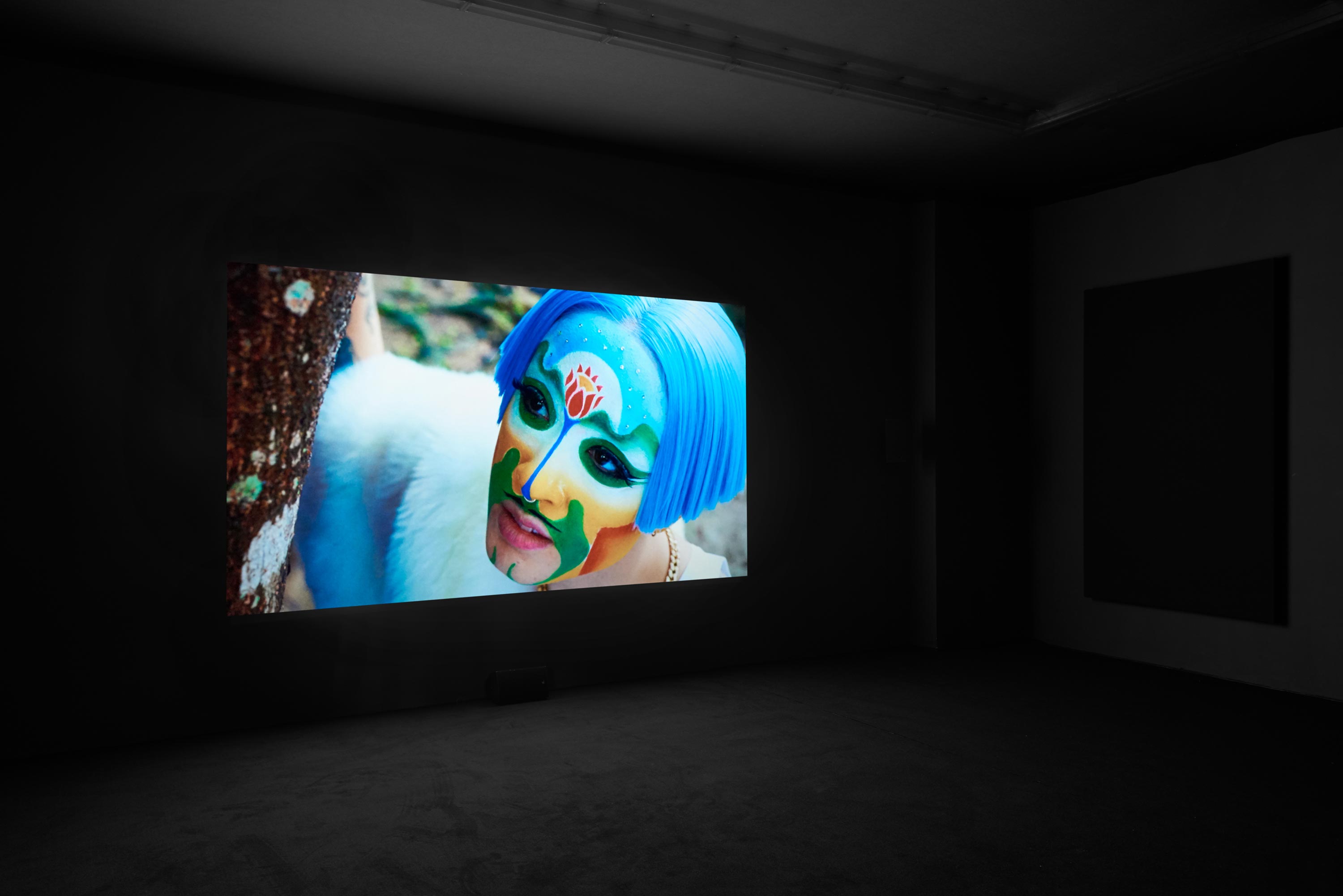Sin Wai Kin brings fantasy to life through storytelling via moving image, performance, writing, sound and print. Their work draws on the experience of existing between fixed categories, realising fictional narratives to describe real experiences of desire and identification.
The exhibition traces the imprints made into facial wipes after Sin removed each character, each day of the film production for A Dream of Wholeness in Parts (2021). A single sculpture, The Universe’s Ornaments (2022), accompanies these works, displaying the wig and butterfly-embellished diamanté necklace worn by the artist as one character in the film. In this context and on view alongside the film, these works expand Sin’s interest in transformation through embodied speculative fictions through the continuous and purposeful performance of multiple selves.
A Dream of Wholeness in Parts takes Chuang Tzu’s allegory Dream of the Butterfly (c. 300 BC) as its starting point, in which the ancient Taoist imagines the experience of the senses as a dream. The philosopher dreams so vividly that he is a butterfly that he wakes uncertain which state of consciousness is reality. Sin’s film follows three characters played by the artist: The Universe and both sides of The Construct’s internalised false dichotomy, each grappling with their surroundings and each other in dreamscapes they journey through and continually wake from.
In the film, Sin weaves traditional Chinese dramaturgy with references to contemporary drag, music and poetry, in order to queer genres and categories while cultivating a space for imagining different worlds and new ways of being. Cantonese and Peking Opera are notable for their fixed character roles, wherein performers wear standardised “masks” in painted make-up, rendering them instantaneously identifiable as archetypal characters in the plot. The rigidity of these roles enables the artist to illuminate societal scripts surrounding binaries of not only masculinity and femininity, but also self and other, thinking and feeling, life and death, dreaming and waking. These binaries are represented and undone in the relationships that the characters have to each other, their contexts, their language and themselves.

